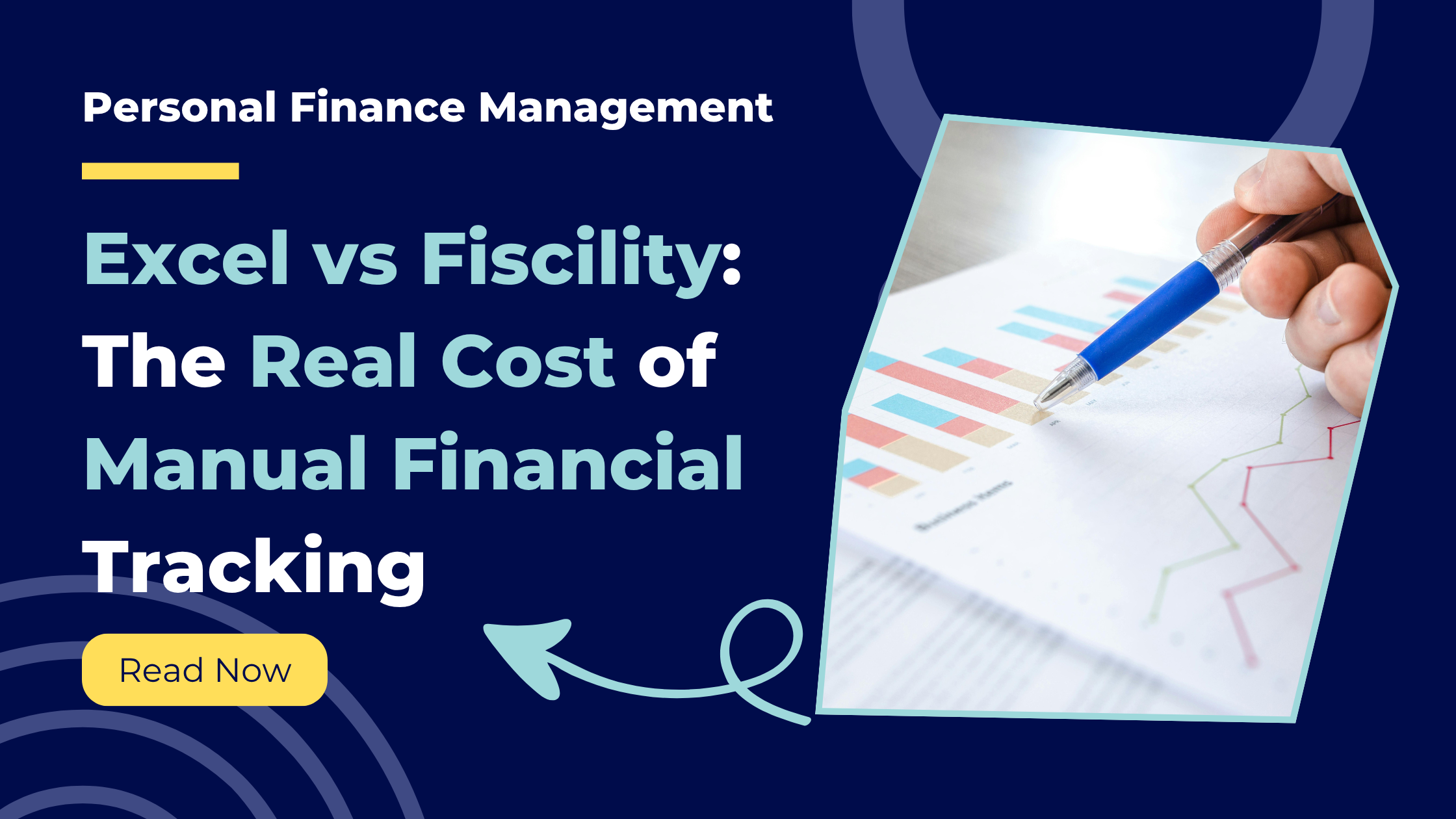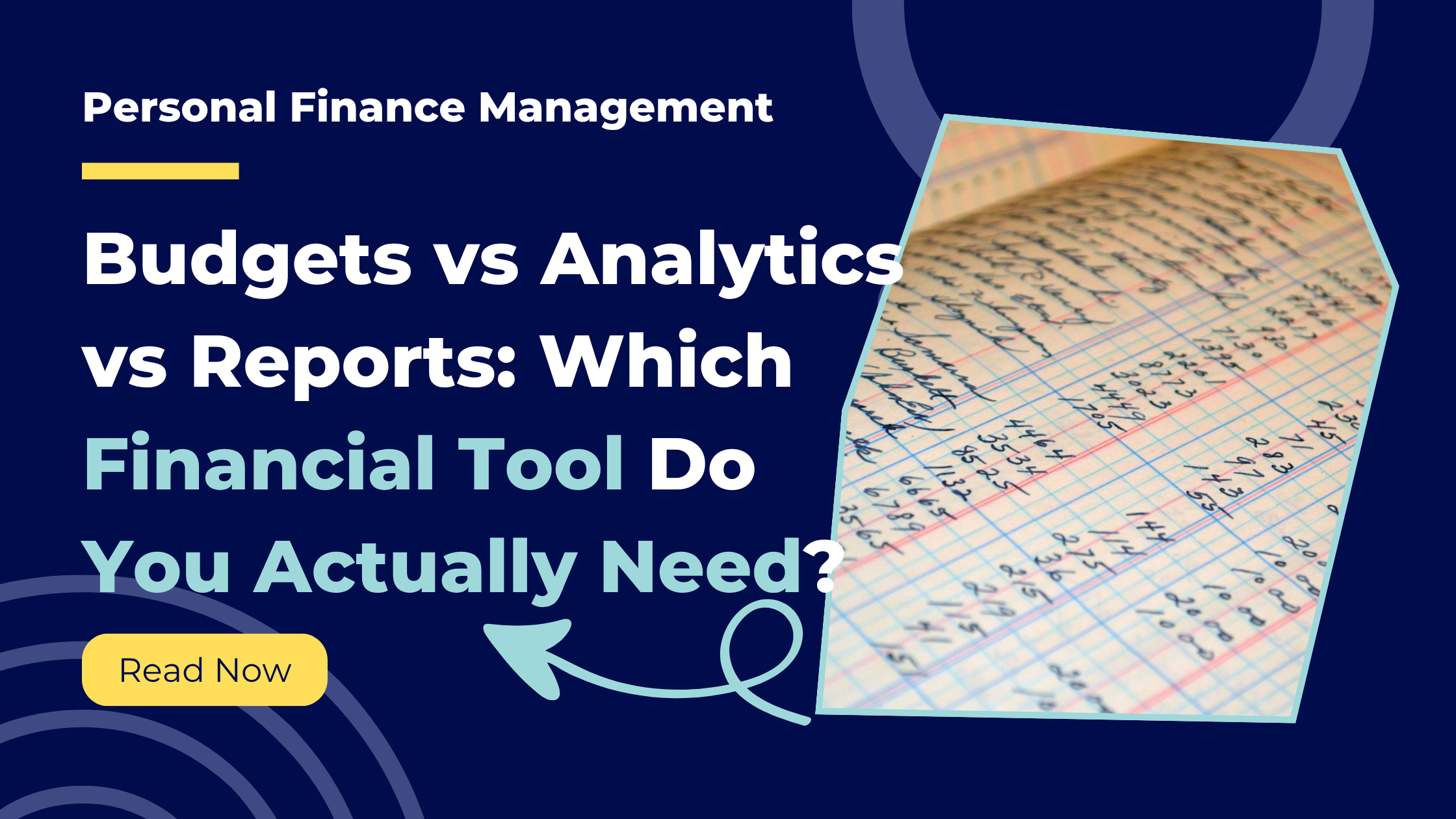
•
1 min read
5 Critical Financial Metrics Every Self-Employed Person Must Track (And Why)
Discover the essential financial metrics that separate thriving freelancers from struggling ones. Learn what to track and how to use each metric.
Being self-employed gives you freedom. It also gives you financial responsibility that employed people never face. No regular paycheque. No employer pension contributions. No paid holiday. Just you, your income, and the decisions that determine whether your business survives.
Most self-employed people track revenue. Some track expenses. Very few track the metrics that actually predict financial stability.
According to research from the Association of Independent Professionals and the Self-Employed, over 60% of freelancers have experienced late payment issues, and 1 in 4 have considered giving up due to financial stress. The root cause is not lack of work. It is lack of visibility into the right numbers.
In this post, you will learn the five critical financial metrics every self-employed person must track, what each metric tells you, how to calculate it, and how to use it to make better business decisions. Fiscility automates tracking for all five metrics, giving you clarity without spreadsheets.
Why Self-Employed Finances Are Different
The Challenges of Irregular Income
When you are employed, your income is predictable. Same amount, same day, every month. You know exactly what you have to work with.
When you are self-employed, income varies. Some months bring £8,000. Others bring £2,000. You might invoice £15,000 in January but receive payment in March. This variability makes traditional financial management tools break down.
You cannot budget the same way. You cannot rely on account balances alone. You need metrics that account for timing, variability, and sustainability.
The Cost of Financial Blind Spots
Without the right metrics, self-employed people make dangerous assumptions. They assume a good month means financial stability. They assume current income will continue. They assume they can afford something because the bank balance looks healthy.
These assumptions lead to three common problems. You overspend during high-income periods and scramble during low-income periods. You fail to set aside enough for tax, creating panic when the bill arrives. You do not know if your business is actually profitable or just generating cash temporarily.
The solution is tracking the right metrics consistently.
Metric 1: Monthly Burn Rate
What It Is
Your burn rate is how much money you spend per month to sustain your life and business. This includes personal expenses, business costs, and tax obligations. It answers one question: how much do you need to earn each month to break even?
Why It Matters
Your burn rate is your financial baseline. If you know you need £3,500 per month to cover everything, you know that earning £4,000 means you are £500 ahead. Earning £3,000 means you are £500 behind.
This metric prevents dangerous optimism. A £6,000 month feels great, but if your burn rate is £4,000, you only cleared £2,000 after costs. Without knowing your burn rate, you might celebrate and overspend instead of saving the surplus.
How to Calculate It
Add up all monthly outgoings over the past three to six months, then divide by the number of months. Include personal expenses, business costs, subscriptions, insurance, tax provisions, and debt payments.
Formula:
(Total Spending Over 6 Months) ÷ 6 = Monthly Burn Rate
Example:
You spent £21,000 over six months. Your burn rate is £3,500 per month.
How to Use It
Compare every month's income against your burn rate. Are you consistently above it? You are building stability. Are you consistently below it? You need more work or lower costs.
Your burn rate also determines how much emergency fund you need. If your burn rate is £3,500 and you want six months of runway, you need £21,000 in savings.
Fiscility calculates your burn rate automatically using your transaction history and displays it in your dashboard. You see your baseline without manual maths.
Metric 2: Runway (Time Until Funds Run Out)
What It Is
Runway is how long your current savings will last if income stops completely. It measures financial resilience. The formula is simple: total savings divided by monthly burn rate.
Why It Matters
Runway tells you how much breathing room you have. If you have £10,000 in savings and a £2,500 burn rate, you have four months of runway. If income drops to zero tomorrow, you can sustain yourself for four months before making drastic changes.
This metric eliminates panic. When you know your runway, you make rational decisions instead of reactive ones. Losing a client feels less catastrophic when you know you have six months to replace the revenue.
Runway also guides risk decisions. Considering a speculative project that takes three months with no income? Check your runway. Less than four months? Too risky. More than eight months? You can afford the bet.
How to Calculate It
Take your total liquid savings and divide by your monthly burn rate.
Formula:
Total Savings ÷ Monthly Burn Rate = Runway (in months)
Example:
You have £14,000 in savings. Your burn rate is £3,500 per month. Your runway is four months.
How to Use It
Track runway monthly. Is it increasing or decreasing? Increasing runway means you are building stability. Decreasing runway means you are spending reserves and need action.
Set a minimum runway target. Most financial advisors recommend three to six months for self-employed individuals. Below three months, focus on revenue generation and cost reduction. Above six months, you have flexibility to invest in growth.
Fiscility displays your current runway prominently in daily and weekly reports, so you always know your financial cushion without manual calculation.
Metric 3: Effective Tax Rate
What It Is
Your effective tax rate is the percentage of gross income you should set aside for tax obligations. This includes income tax, national insurance, and VAT if applicable. It accounts for allowances, deductions, and thresholds.
Why It Matters
Tax is the biggest financial surprise for new self-employed people. You earn £50,000 in your first year. You spend £45,000 thinking you are doing well. Then the tax bill arrives for £8,000. You do not have it. You panic.
Knowing your effective tax rate prevents this. If your rate is 25%, you know that earning £4,000 means £3,000 is yours and £1,000 goes to tax. You set aside that £1,000 immediately. When the bill arrives, you are ready.
How to Calculate It
Use your previous year's tax return or a tax calculator to estimate total tax owed. Divide that by gross income to get your effective rate.
Formula:
(Total Tax Owed) ÷ (Gross Income) × 100 = Effective Tax Rate (%)
Example:
You earned £45,000 gross. Your total tax bill was £9,000. Your effective rate is 20%.
For the current year, apply this rate to every invoice paid. Invoice £3,000? Set aside £600 (20%) for tax.
How to Use It
Create a separate tax savings account. Every time you receive payment, immediately transfer your effective tax rate percentage to this account. Do not touch it. When tax deadlines arrive, the money is ready.
Review your effective rate annually. As income grows, you move into higher tax brackets. Your rate increases. Adjust your set-aside percentage accordingly.
Fiscility can help you track income against tax provisions, showing whether you are setting aside enough based on your target rate. While it does not calculate tax owed, it gives you visibility into whether your tax savings match your income growth.
Metric 4: Average Monthly Income (Trailing 12 Months)
What It Is
Your average monthly income smooths out the variability of self-employment. Instead of reacting to each month individually, you look at the past 12 months and calculate the average.
Why It Matters
Self-employed income fluctuates wildly. January might bring £8,000. February might bring £1,500. If you react to each month, you oscillate between celebration and panic.
Average monthly income gives you stability. You see the trend instead of the noise. If your 12-month average is £4,200 per month, you know that is your sustainable income level, regardless of this month's spike or dip.
This metric guides sustainable spending. Do not increase your lifestyle based on one great month. Increase it only when your 12-month average rises consistently.
How to Calculate It
Add up total income received over the past 12 months. Divide by 12.
Formula:
(Total Income Last 12 Months) ÷ 12 = Average Monthly Income
Example:
You earned £51,000 over the past year. Your average monthly income is £4,250.
How to Use It
Compare your average income to your burn rate. Is there a healthy gap? You are building surplus. Is the gap shrinking? You need to increase revenue or reduce costs.
Track how this average changes over time. Consistent growth in your 12-month average means your business is genuinely expanding. Flat or declining average means you need strategy changes.
Use your average income, not your best month, to make lifestyle decisions. Buying a car? Upgrading your flat? Base affordability on your average, not your peak.
Fiscility calculates your trailing 12-month average automatically and shows the trend line, helping you see whether your income is genuinely growing or just experiencing normal variation.
Metric 5: Profit Margin (After All Costs)
What It Is
Your profit margin is the percentage of revenue you keep after all expenses. It measures business efficiency. A high margin means you keep most of what you earn. A low margin means costs consume most of your revenue.
Why It Matters
Revenue is vanity. Profit is sanity. You can earn £100,000 per year and be broke if your costs are £95,000. You can earn £40,000 and be comfortable if your costs are £25,000.
Profit margin reveals business health. If your margin is 60%, you keep £60 of every £100 earned. If your margin is 10%, you keep only £10. The latter means you are one bad month away from financial stress.
This metric also guides pricing decisions. If your margin is too low, you cannot afford to lower prices to win work. You need to either raise prices or reduce costs to stay viable.
How to Calculate It
Subtract total expenses from total income. Divide the result by total income. Multiply by 100 to get a percentage.
Formula:
((Total Income - Total Expenses) ÷ Total Income) × 100 = Profit Margin (%)
Example:
You earned £48,000. Your expenses were £30,000. Your profit is £18,000. Your margin is 37.5%.
How to Use It
Track your margin monthly and quarterly. Is it improving or declining? Declining margins signal cost creep or pricing problems. You need action.
Benchmark against your industry. Different sectors have different typical margins. Creative freelancers often have margins between 40% and 60%. Consultants may see 50% to 70%. Product-based businesses may see 20% to 40%. Know where you sit.
If your margin is below 30%, you are vulnerable. Unexpected expenses or slow months will hurt. Focus on increasing prices, reducing costs, or both.
Fiscility displays your profit margin in the analytics dashboard, breaking down where your money goes and showing trends over time, so you can spot margin erosion before it becomes a crisis.
How These Metrics Work Together
The Complete Financial Picture
These five metrics do not work in isolation. They combine to show whether your self-employed business is sustainable, growing, or struggling.
Burn rate tells you what you need.
Runway tells you how long you can survive disruption.
Effective tax rate tells you what you must set aside.
Average income tells you what you actually earn sustainably.
Profit margin tells you how efficient your business is.
When you track all five, you see the complete picture. You know what you need, what you have, what is coming, and whether your business model works.
Example: Using All Five Metrics
You are a freelance graphic designer. Your metrics:
- Burn rate: £3,200/month
- Runway: 5 months (£16,000 in savings)
- Effective tax rate: 22%
- Average income: £4,500/month
- Profit margin: 42%
What does this tell you?
Your average income exceeds your burn rate by £1,300 per month. That is healthy. Your runway gives you five months of buffer, which is solid. Your tax rate means £990 of that £4,500 goes to tax, leaving £3,510 net. After covering your £3,200 burn rate, you have £310 per month surplus.
Your profit margin of 42% is strong. You are keeping a good percentage of what you earn.
The story: your business is stable. You have breathing room. You can afford to take a calculated risk like pitching a new service or investing in better equipment.
Now imagine different metrics:
- Burn rate: £4,000/month
- Runway: 2 months (£8,000 in savings)
- Average income: £4,200/month
- Profit margin: 18%
This tells a different story. Your income barely covers your burn rate. Your runway is dangerously low. Your margin is thin. One bad month could tip you into crisis.
The action: reduce costs, increase prices, or find additional revenue streams immediately. You do not have time to be passive.
How Fiscility Tracks These Metrics for You
Automated Calculation Across All Accounts
Fiscility connects to your bank accounts and credit cards via secure open banking. Transactions sync automatically. The platform calculates your burn rate, runway, average income, and profit margin without manual input.
You do not build spreadsheets. You do not export CSVs. You open Fiscility and see your numbers.
Dashboard Visibility
Your analytics dashboard displays all five metrics in one view. You see current values and trends over time. Is your burn rate increasing? Is your runway shrinking? Is your profit margin improving? The answers are immediate.
This visibility transforms decision-making. You stop guessing whether you can afford something. You check your runway and margin. You know.
Scheduled Reports with Context
Fiscility includes these metrics in scheduled reports. Your weekly summary shows whether your runway increased or decreased. Your monthly report shows changes in burn rate and profit margin.
This consistency builds intuition. Over time, you develop a sense for your financial position without manual tracking.
Tax Provision Tracking
While Fiscility does not calculate tax owed, it helps you track income against your target tax provision. You set your effective tax rate. The platform shows whether your tax savings account is keeping pace with your income.
This prevents the end-of-year tax panic that catches so many self-employed people.
Key Takeaways
Self-employed finances are different. Irregular income, variable expenses, and tax obligations create complexity that traditional tools cannot handle.
The five critical metrics are burn rate, runway, effective tax rate, average monthly income, and profit margin. Each answers a specific question about your financial sustainability.
Burn rate tells you what you need to earn. Runway tells you how long you can survive without income. Effective tax rate tells you what to set aside. Average income smooths out variability. Profit margin measures business efficiency.
These metrics work together to show whether your self-employment is sustainable, growing, or struggling. Track them consistently to make confident financial decisions.
Fiscility automates tracking for all five metrics, giving you visibility without spreadsheets or manual calculations. You see your numbers, understand your position, and make better decisions.
Start Tracking What Actually Matters
Most self-employed people track revenue and expenses. The successful ones track burn rate, runway, tax provisions, average income, and profit margin.
These five metrics separate financial clarity from financial guesswork.
Fiscility delivers all five automatically, so you can focus on your work instead of your spreadsheets.
Try Fiscility free for 7 days and see how automated metric tracking transforms your self-employed finances: Start Your Free Trial
Summary
Being self-employed demands financial awareness that employed people never need. Irregular income and variable expenses create challenges that traditional budgeting cannot solve.
The five critical metrics every self-employed person must track are burn rate, runway, effective tax rate, average monthly income, and profit margin. Each reveals a different dimension of financial health.
Track these consistently. They tell you whether your business is sustainable, whether you can afford opportunities or risks, and whether you need to adjust pricing or costs.
Fiscility automates all five, giving you clarity without effort.
Found this helpful? Share it with others!
Ready to take control of your finances?
Join Fiscility today and start your financial journey.
Apply for a Membership

